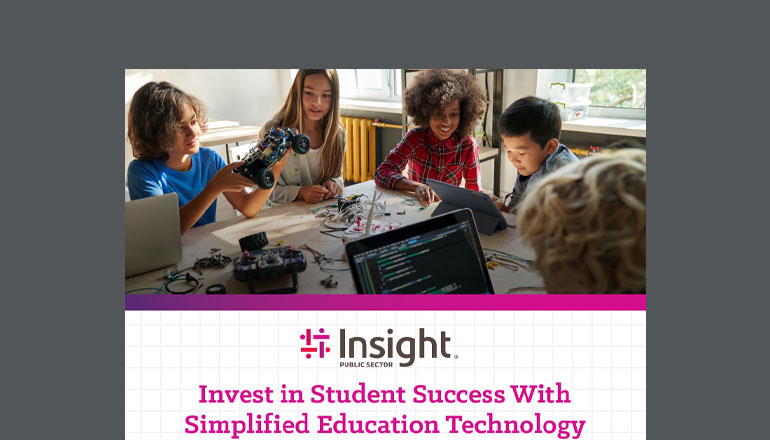Explore Academic Opportunities with School Drillers Education Insight
Explore Academic Opportunities with School Drillers Education Insight
Blog Article
The Role of Education in Structure a Comprehensive Educational Website for All
The duty of education and learning in establishing a thorough educational website for all is increasingly acknowledged as crucial in today's diverse society. This inquiry welcomes further exploration right into the dynamics of educational equity and performance.
Importance of Inclusivity

When educational sites focus on inclusivity, they create a society of belonging where every pupil feels valued and empowered. This environment motivates active involvement, partnership, and shared regard among students, facilitating stronger interpersonal relationships. Furthermore, inclusive practices contribute to enhanced academic end results, as pupils are more probable to involve with the curriculum when they see their identifications reflected and appreciated.
Moreover, inclusivity prepares pupils for a varied workforce and society, outfitting them with the skills necessary to browse and add positively to varied settings. By welcoming inclusivity, academic websites not just meet their honest responsibilities but additionally improve the educational landscape, ultimately benefiting students, instructors, and the area at big. As a result, fostering inclusivity is crucial for the improvement of equitable and effective education.
Leveraging Innovation for Knowing
Including innovation into instructional sites boosts inclusivity by offering varied learning tools and sources tailored to specific needs. Digital systems enable the assimilation of multimedia resources, such as video clips, interactive simulations, and gamified learning experiences, which deal with varying discovering designs. This ease of access ensures that learners can involve with content in manner ins which reverberate with them, promoting a much deeper understanding of subject.
Additionally, technology assists in real-time responses and customized understanding pathways. With flexible learning innovations, instructional websites can assess specific efficiency data, allowing customized web content delivery that satisfies each student's rate and proficiency level. This strategy not just enhances involvement however additionally encourages trainees to take ownership of their discovering journey.

Cutting-edge Training Methods

One popular approach is project-based discovering (PBL), which motivates trainees to engage in hands-on projects that address intricate concerns or challenges. This strategy promotes partnership, creativity, and analytic abilities, all of which are vital in today's workforce. Flipped class have actually gotten traction, where standard learning is reversed; trainees assess lecture materials at home and involve in interactive activities throughout class time, advertising deeper understanding and retention.
One more significant pattern is the integration of gamification right into education. By including game aspects into lessons, teachers motivate learners and boost involvement via competition and incentives. Additionally, set apart instruction dressmakers learning experiences to satisfy the varied needs of trainees, permitting customized understanding courses that adjust to differing interests and capabilities.
Cooperation and Community Building
Regularly, collaboration and neighborhood structure are identified as important parts of reliable education, promoting a inclusive and supportive discovering setting. These components create a framework where trainees, teachers, and area participants can participate in meaningful interactions, improving the academic experience for all individuals.
Cooperation encourages the sharing of ideas, resources, and know-how, promoting a richer learning process. This dynamic helps to break down silos within the educational community, promoting interdisciplinary methods that can deal with complicated problems. By collaborating, educators can develop innovative curricula that reflect varied viewpoints while fulfilling the diverse demands of trainees.
Neighborhood building goes hand in hand with collaboration, as it cultivates a feeling of belonging amongst all stakeholders. When individuals really feel connected to their instructional community, they are most likely to spend time and resources right into collective objectives. This shared commitment can bring about raised Learn More Here motivation, improved academic end results, and better retention rates.
Moreover, cultivating cooperation and neighborhood structure can also prolong past the class, involving moms and dads, neighborhood companies, and companies. These collaborations can give support and sources that improve academic opportunities, inevitably adding to a more detailed academic site for all.
Gauging Success and Influence
The performance of partnership and area structure in academic settings can be evaluated through different metrics that gauge success and impact. These metrics may include student involvement levels, academic efficiency, retention rates, and area feedback. By using quantitative data such as test ratings and college graduation prices, instructional stakeholders can determine the overall efficiency of collective initiatives.
In addition, qualitative evaluations, such as surveys and focus groups, supply beneficial insights into individual fulfillment see here now and regarded benefits of community-building activities. Regularly tracking these metrics enables instructors to recognize areas of stamina and those requiring renovation, guaranteeing that collective initiatives continue to be focused and impactful.
Moreover, longitudinal researches can help determine the long-lasting results of educational partnerships on student results and neighborhood development. These analyses can disclose trends in time, showing just how continual collaboration fosters an atmosphere for discovering and growth.
Inevitably, specifying success in instructional setups calls for a complex approach, integrating both quantitative and qualitative information. By continually evaluating the impact of collaboration and community-building initiatives, educational websites can improve their approaches, guaranteeing they fulfill the varied demands of all stakeholders included.
Final Thought
In conclusion, education and learning serves as a cornerstone in developing an extensive educational website that prioritizes inclusivity for all students. Eventually, the commitment to inclusivity and equity prepares pupils for success in a diverse and interconnected world, reinforcing the transformative power of education and learning.
The significance of inclusivity in instructional sites can not be overemphasized, as it plays a critical function in cultivating a discovering environment that suits moved here diverse histories and abilities. Inclusivity makes certain that all students, no matter of their socio-economic status, ethnic culture, gender, or finding out capabilities, have fair access to academic sources and chances.When instructional sites focus on inclusivity, they create a culture of belonging where every pupil feels valued and equipped. By embracing inclusivity, academic websites not only meet their ethical responsibilities yet also enhance the instructional landscape, eventually profiting pupils, educators, and the neighborhood at huge.The effectiveness of partnership and area building in instructional settings can be evaluated with numerous metrics that measure success and impact.
Report this page